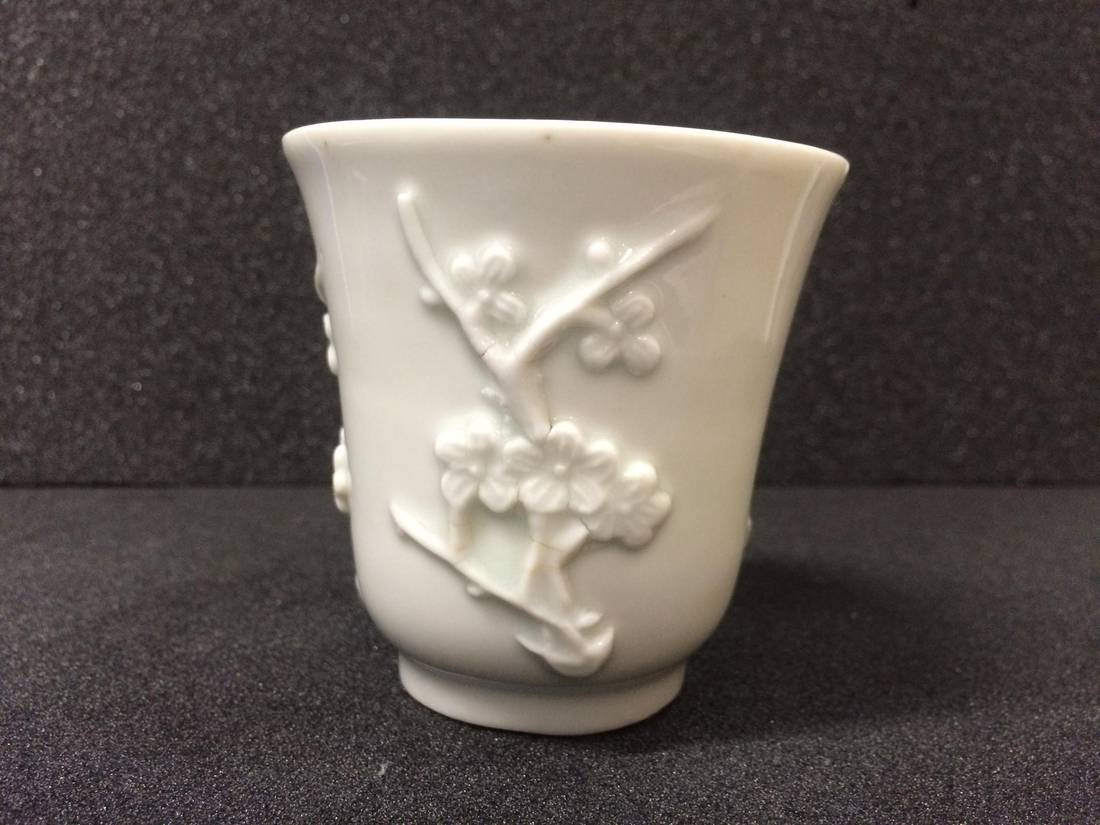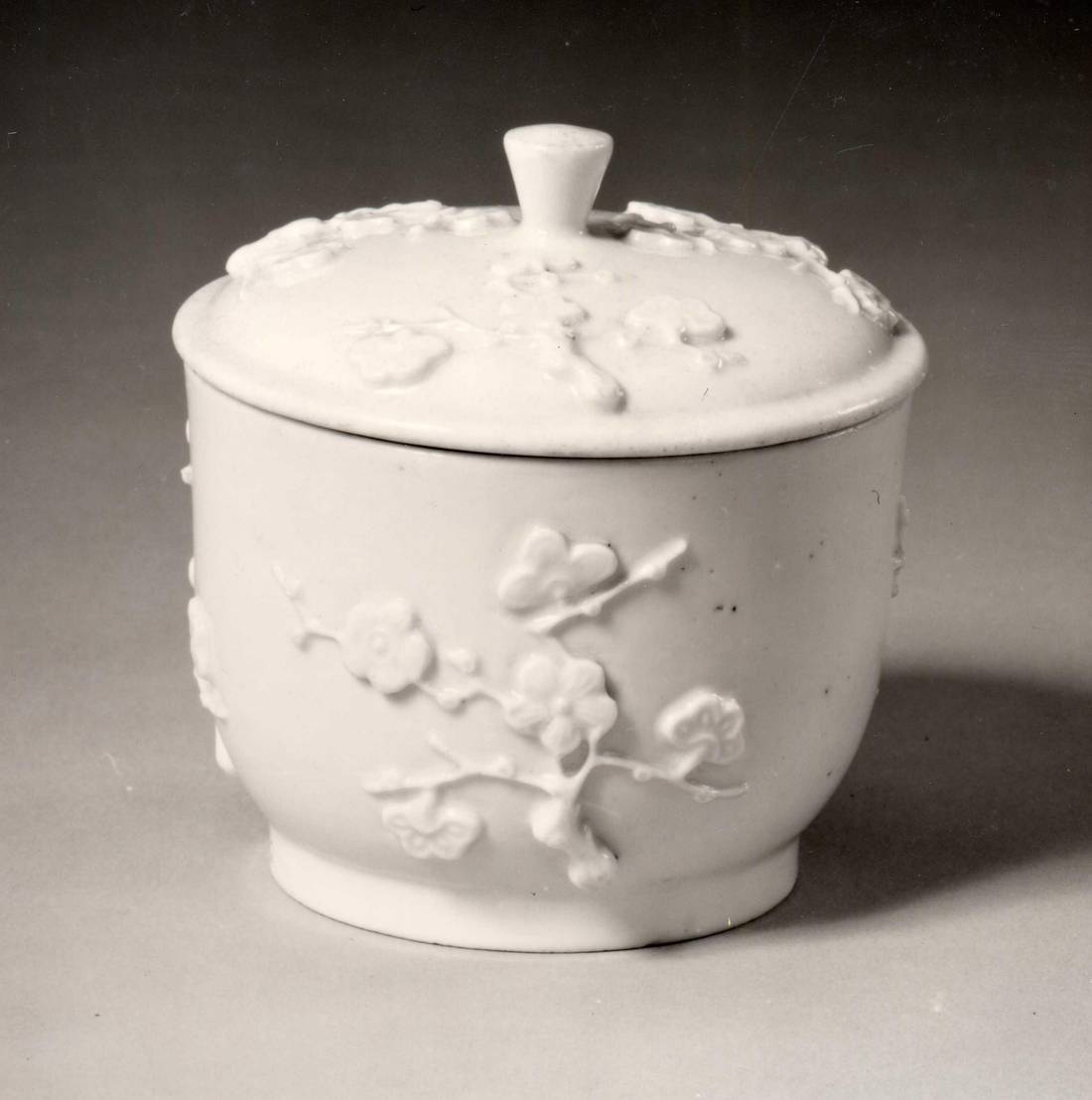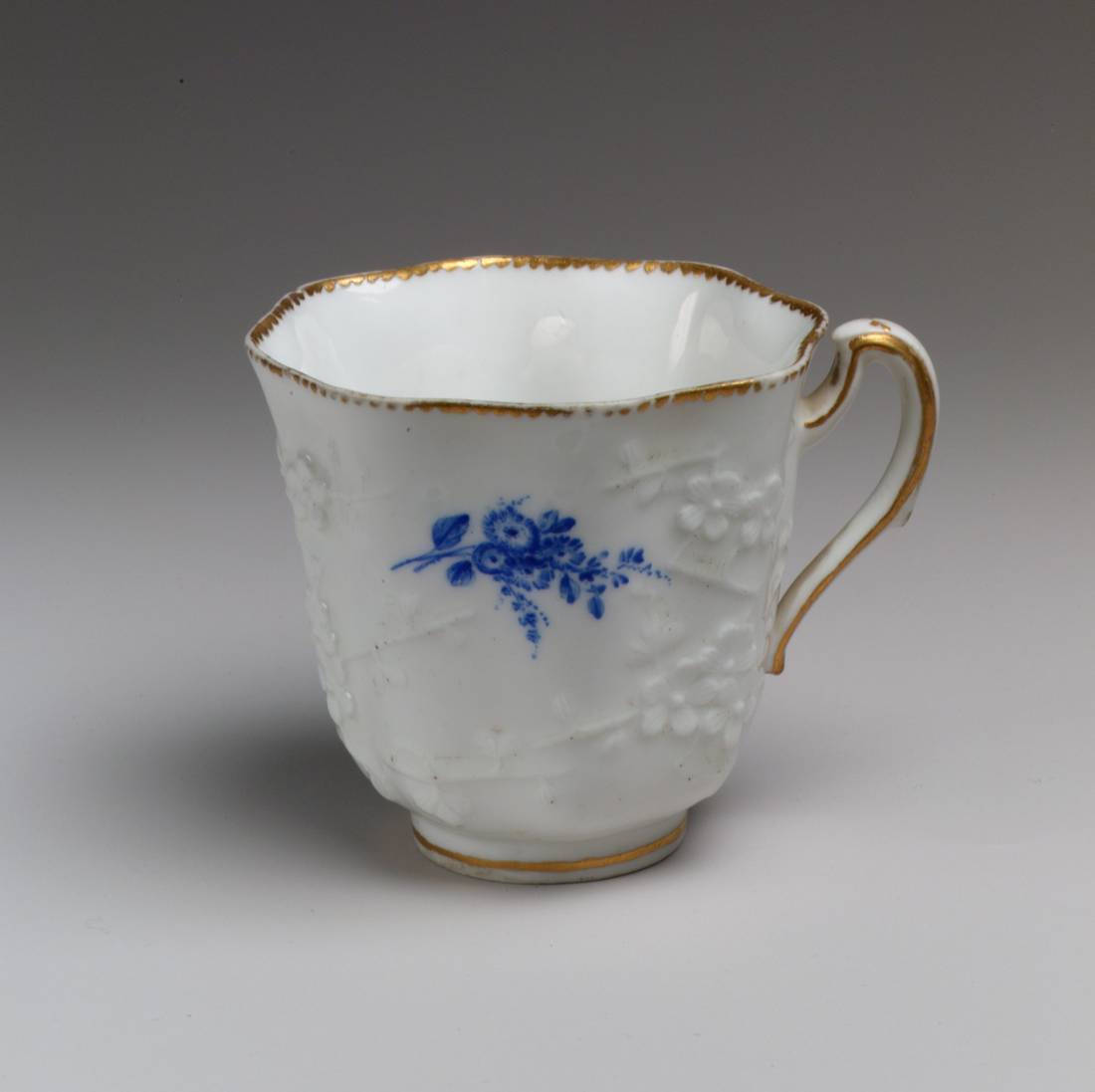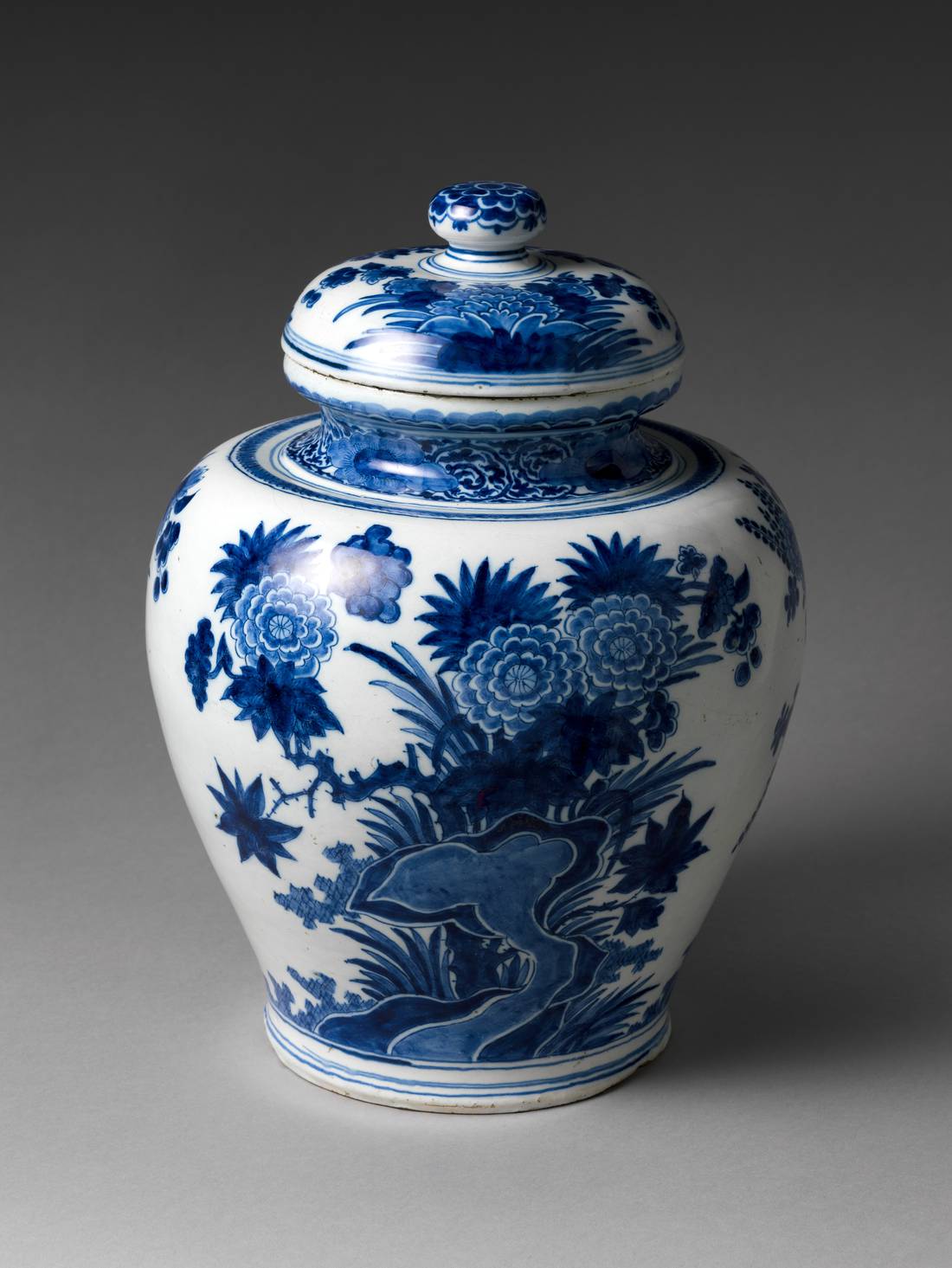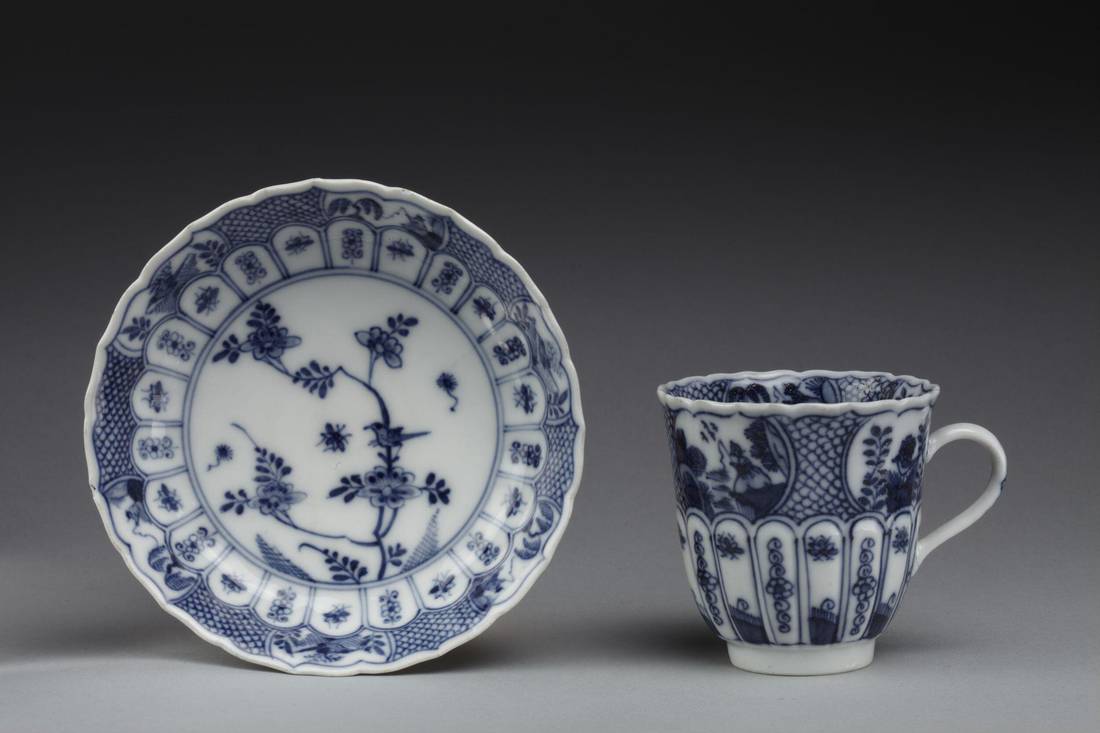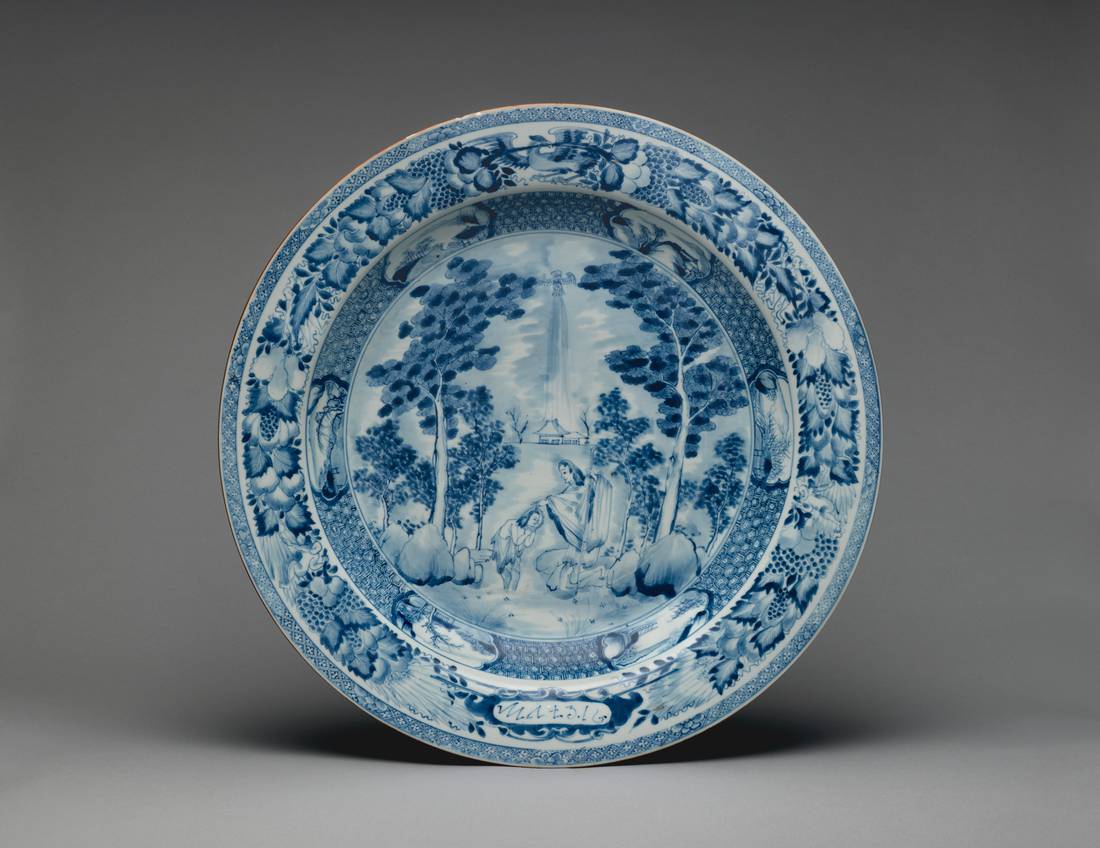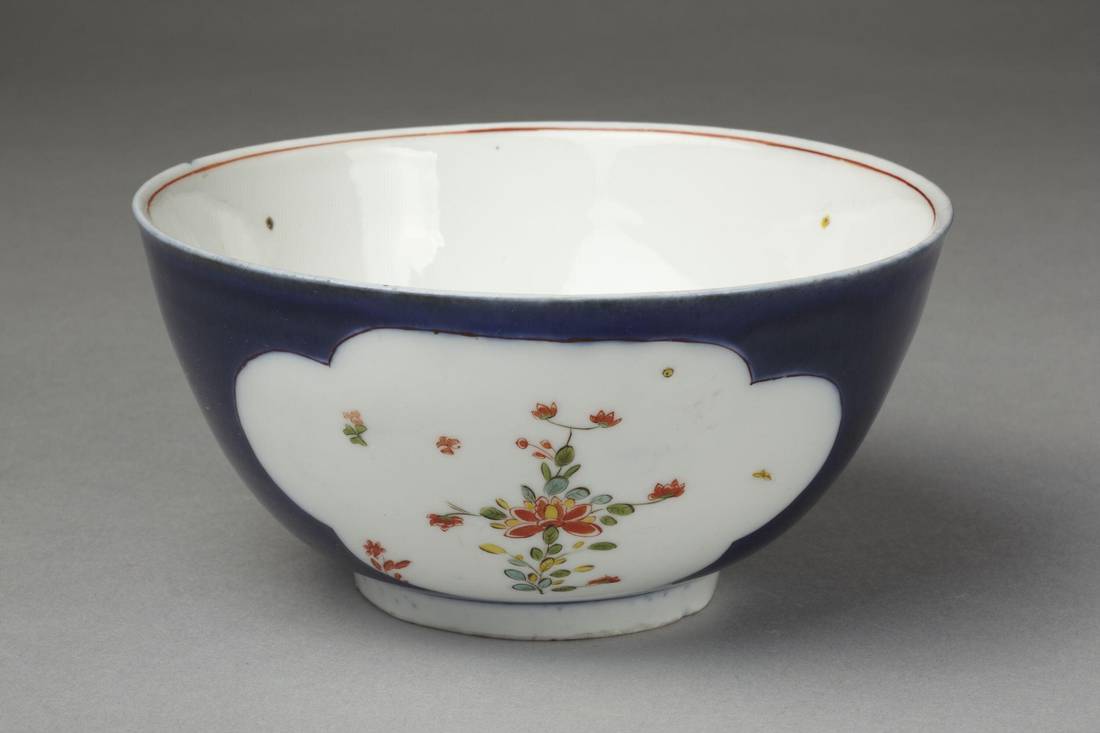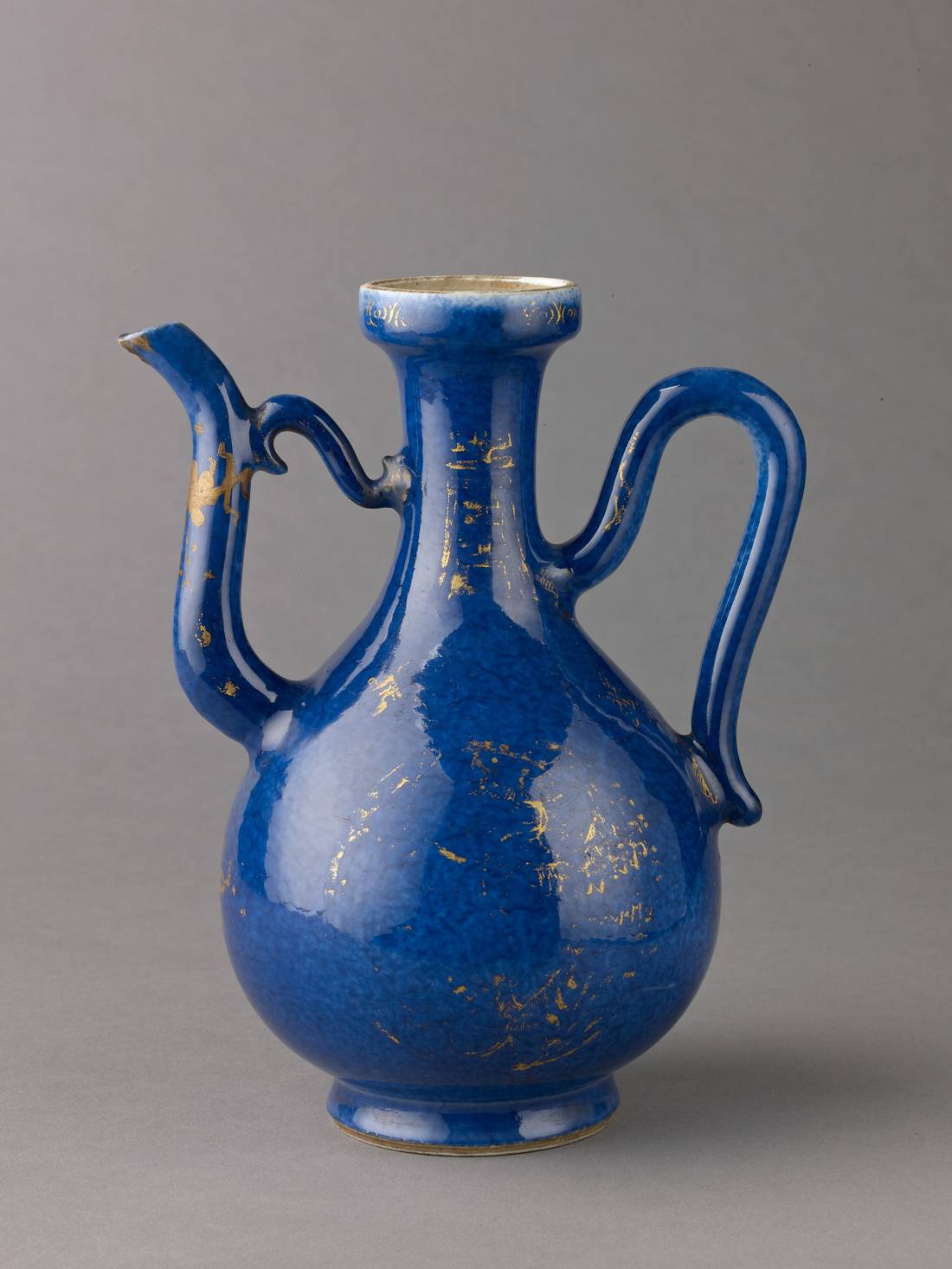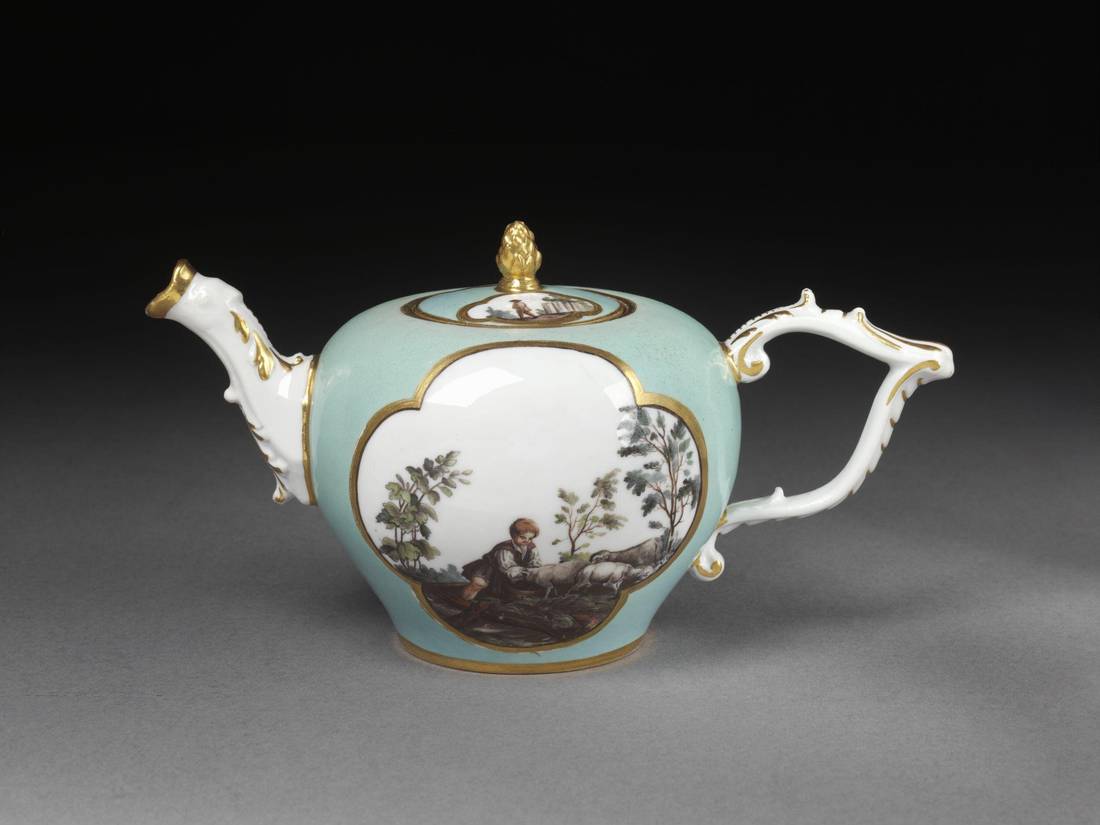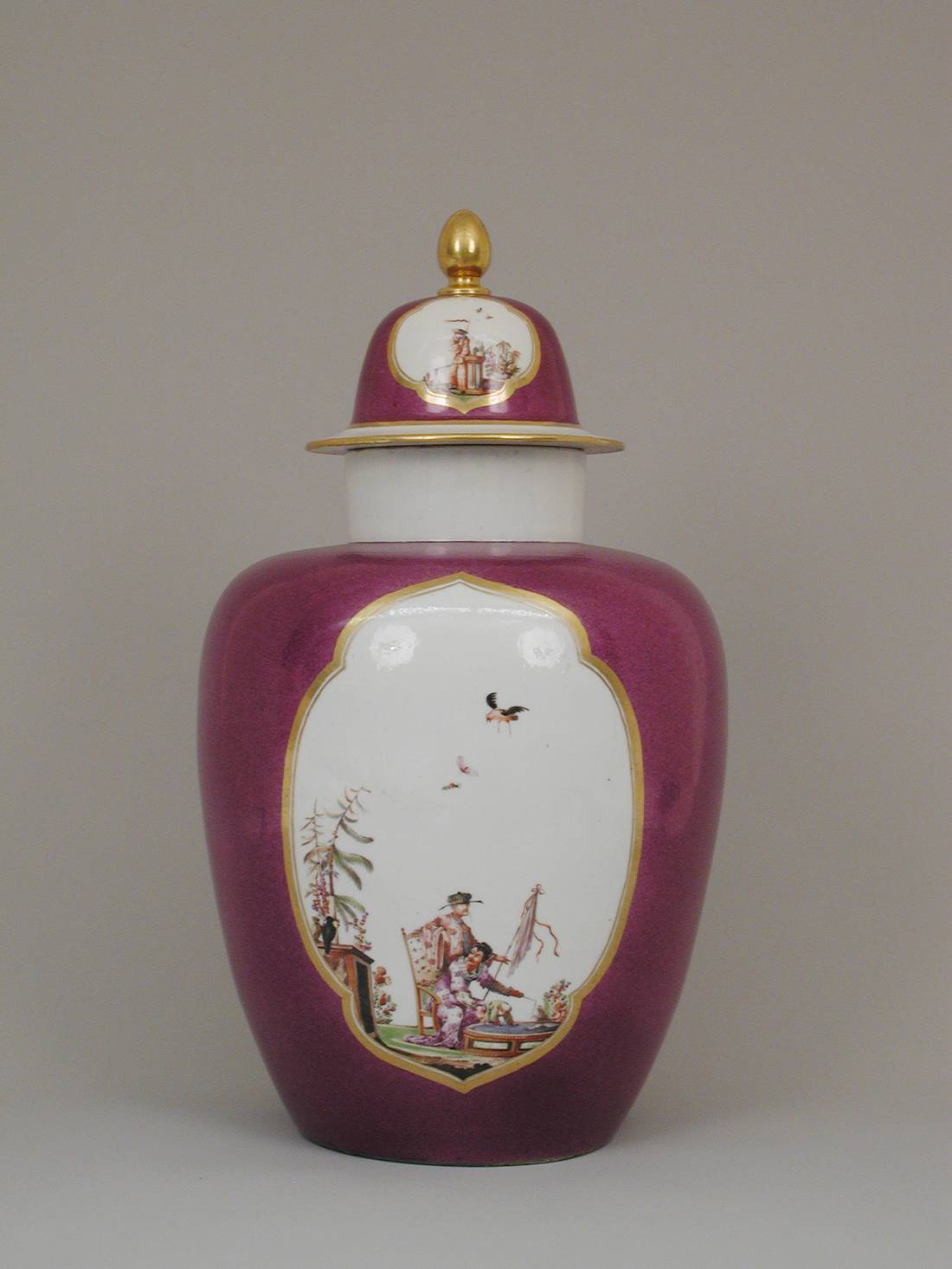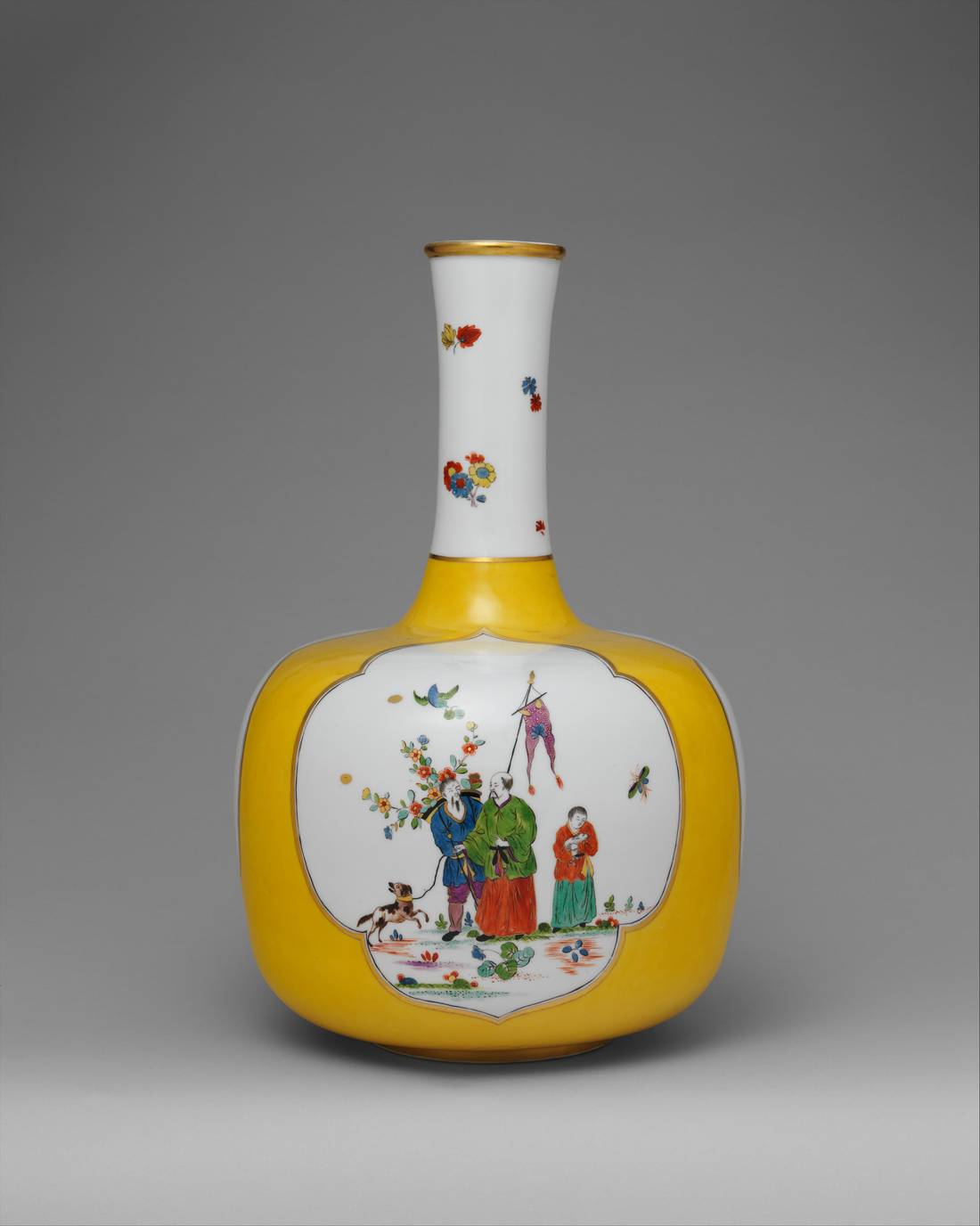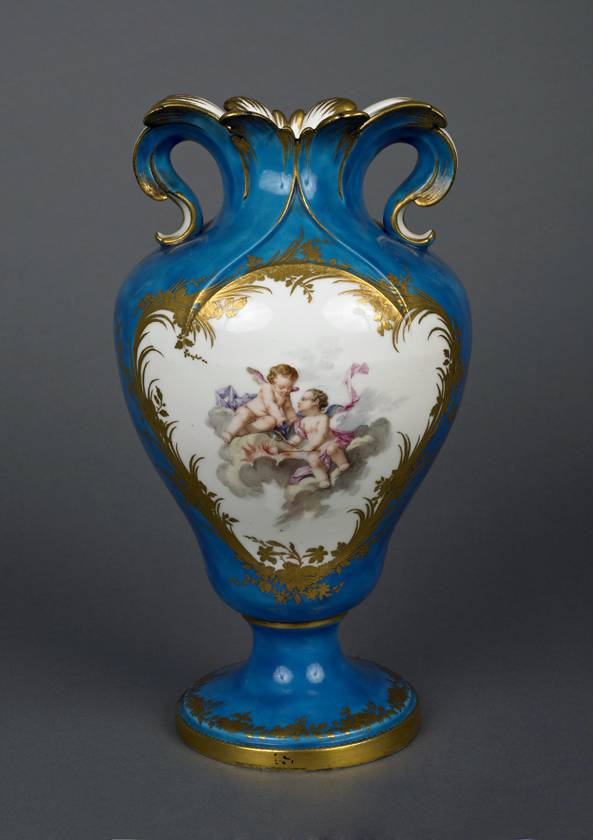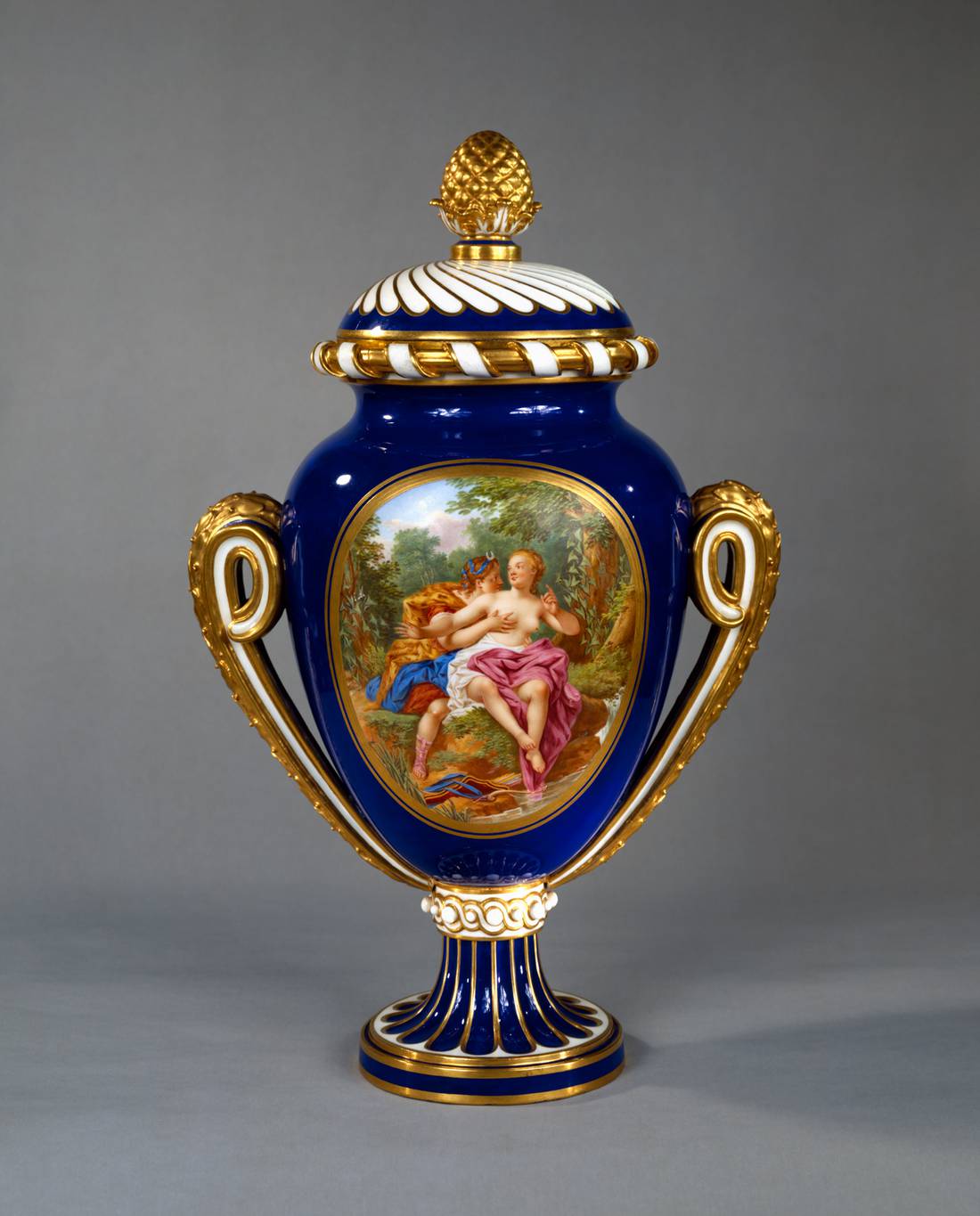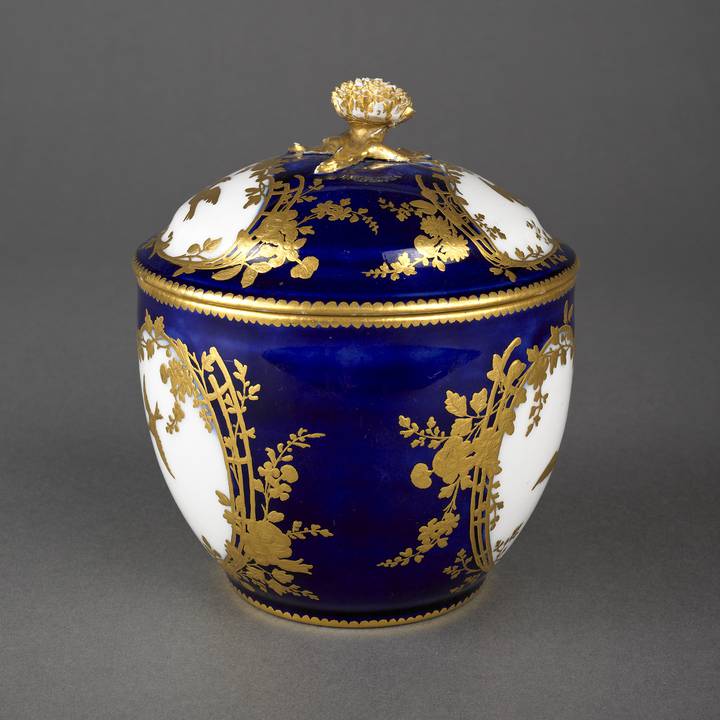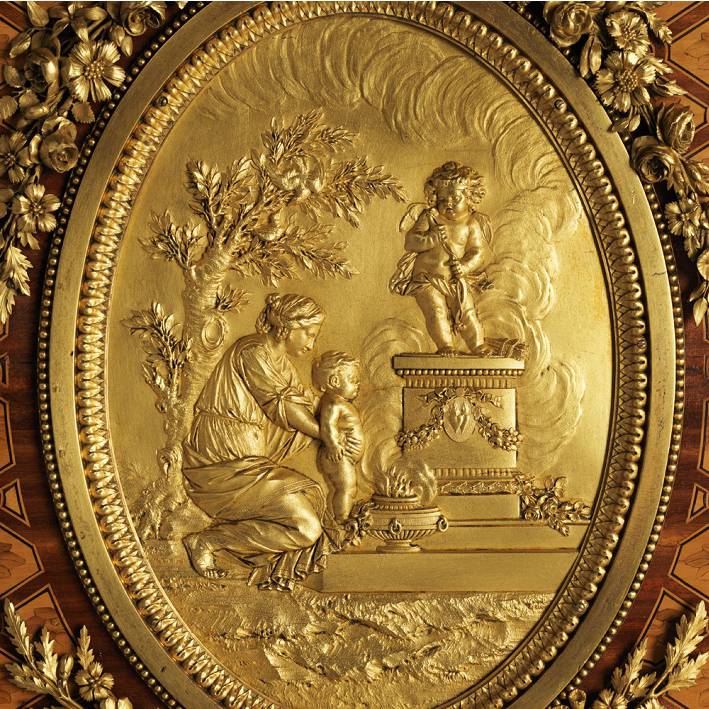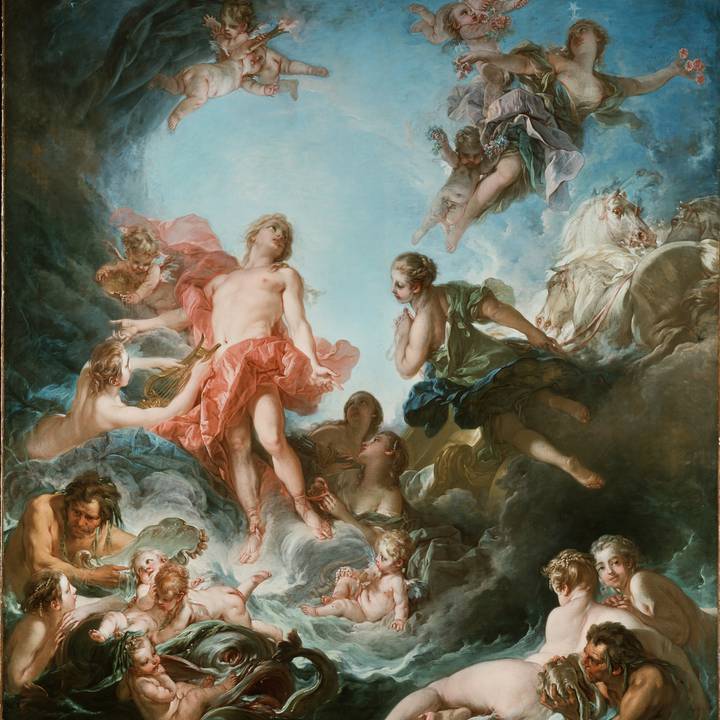To our modern eyes Sèvres porcelain is a quintessentially French production. But, from its origins in the 1740s at the Château de Vincennes, artists and designers have looked towards the East for inspiration, whether this was the Far East of Japan and China or the closer-to-home Meissen manufactory, in the German electorate of Saxony.
Meissen was the first European manufactory able to develop ‘true’ hard-paste porcelain similar to that imported from Asia, paving the way for other initiatives in Europe but also establishing the standards against which French porcelain would be measured. Its proximity situated Meissen as a clear competitor to French porcelain in general and Vincennes-Sèvres porcelain in particular.
The fascination for Asian artistic productions, imported into eighteenth-century Europe by ship through the various East India Companies, resulted in an imitation and reinterpretation of Far-Eastern motifs known as chinoiseries. Meissen was not impervious to this fashion and introduced Chinese and Japanese-inspired designs from the 1720s. Some of the early experimental pieces reproducing Asian models were tableware for the consumption of exotic drinks such as chocolate.
This beaker and saucer, with their white relief decoration of prunus branches in bloom, are close imitations of products from Dehua, in China, known in Europe as blanc de Chine. Other French manufactories such as Saint-Cloud and, by the1750s, Vincennes, also sought inspiration in these models.
_
Please drag left or right to browse the gallery and click on an object to expand it.
European porcelain factories also followed the colourful designs that arrived from the Far East. The seventeenth century had already seen the appearance of earthenware in imitation of blue-and-white Chinese porcelain in the Dutch city of Delft, a colour combination that was instantly associated with China.
While Delftware was covered with an opaque white glaze over which blue painted decoration was applied, Meissen’s white hard-paste porcelain sufficed as a ground for a cobalt blue pigment which was applied under the transparent glaze, thus mimicking the much admired effect of Chinese porcelain.
Meissen also copied the vibrant colours of Chinese famille verte porcelain, the Japanese flowers on Kakiemon porcelain and the intricate asymmetrical designs of Imari wares. Sometimes the Saxon manufactory produced close imitations, but more famously it adapted these motifs into an exotic amalgam of Chinese-inspired flowers known as ‘Indianische Blumen’ or Indian flowers.
_
Please drag left or right to browse the gallery and click on an object to expand it.
In the 1730s, Meissen started to produce objects that were largely covered with a single colour, leaving spaces in white, the reserves, decorated with landscapes, flowers and figures. Meissen made use of an extensive colour palette that included a deep powdered blue ground. This decoration based around a dominant ground colour with white reserves for scenes, was reinterpreted at Vincennes in the early 1750s.
In 1745 Vincennes was granted an exclusive royal patent to manufacture objects in the manner of Meissen, ‘en façon de Saxe’. However, Vincennes developed a characteristically French style, moving away from the Far-Eastern aesthetics of Meissen. The deep blue ground of a teapot in the Wallace Collection, known as ‘bleu lapis’, was the first ground colour introduced at Vincennes in 1752. Applied under the transparent glaze, its mottled effect has been compared to the surface of ‘bleu soufflé’ vases made in China, where the cobalt-blue pigment was blown through a gauze onto the white porcelain before the transparent glaze was applied.
Among the ground colours introduced at Meissen we find turquoise blue, purple and yellow. These enamel colours are of great uniformity, something that Vincennes found difficult to achieve at first, as demonstrated by the uneven ground of turquoise-blue and green objects produced in the 1750s. Chemists at Vincennes — and at Sèvres from 1756, after the manufacture moved premises to the west of Paris — continued developing their colour recipes in search for even enamel ground colours, a poignant example being the development of an overglaze enamel deep blue that superseded the earlier ‘bleu lapis’ and that was fittingly named ‘beau bleu’ or ‘beautiful blue’.
_
Please drag left or right to browse the gallery and click on an object to expand it.
However, a colour that chemists at Meissen managed to produce early on but which recipe chemists at Vincennes-Sèvres seem to have found difficult to master is red. In the 1740s, Vincennes produced some white pieces decorated with iron-based highlights or motifs that ranged from carmine to purple.
They were initially referred to as ‘rouge de Saxe’ or ‘Saxon red’ in reference to Meissen porcelain — similarly, the use of green decoration at Vincennes was originally referred to as ‘vert de Saxe’. Sèvres did not develop a satisfactorily consistent red ground until later in the century with the introduction of hard-paste porcelain.
By the mid-1750s the production at Sèvres was admired and sought after in Europe and, after almost half a century of French manufactories, including Vincennes, looking towards Meissen for inspiration, Meissen started to look west towards Sèvres.
The French had been Meissen’s best client during the first half of the eighteenth century but with the success of Sèvres, the economic difficulties brought by the Seven Years’ War, and a change in taste —first towards the elegant rococo shapes and decorations of the 1740s and 1750s and, from the 1760s, centred around the neoclassical gout grec—, the sale of Meissen porcelain in France abruptly declined.
Meissen was put under investigation and in 1764, a delegation was sent to Paris in order to gather information about the rival manufactories and their successful products so that they could be imitated at Meissen. The delegation was especially interested in acquiring knowledge about technical processes such as glazing and in understanding the recipes for different colours in which Sèvres excelled.
Soon after, Meissen started producing wares in the manner of Sèvres. An example of Sèvres inspiring Meissen is this plate with apple-green ground and a lattice mosaic pattern, c. 1765–75 that echoes Sèvres services from the mid-1750s.
The field trip to Paris must have been of use because two years later, in 1766, another delegation was sent to Paris. This time, two painters accompanied the Meissen official, their mission was to become employed by Sèvres in order to develop their painting skills. However, they also had a secret mission to bring raw samples of colours back to Meissen so that their composition could be studied in, a blatant attempt of industrial espionage.
At Meissen, it was considered that the brilliant colours of Sèvres porcelain were of particular beauty and rarity because, in spite of their efforts, they could not imitate them faithfully. This was due to the difference in paste used in both manufactories. Sèvres’s soft-paste porcelain required lower firing temperatures in order for the pigments to melt in the glaze, giving the resulting colours a particular shine and richness. This was impossible to achieve in the hard-paste porcelain used at Meissen.
Their deep blue colour ‘bleu du roi’, similar to Sèvres’s ‘bleu nouveau’, was their only truly successful attempt.
Possibly the final look towards the east by the eighteenth-century artists and designers at Sèvres with regards to ground colour decoration was the development during the 1780s of a black enamel ground that, in combination with gilded chinoiserie decoration, imitated the effect of Chinese lacquer.
The blue-black pigment results from mixing oxides of iron, copper, cobalt and manganese, a particularly delicate recipe. It was applied in thick layers over the hard-paste porcelain introduced in the previous decade.
